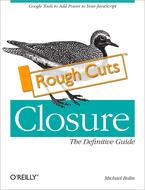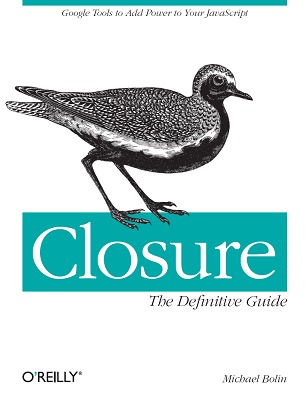
Today's update to the Rough Cut is particularly momentous as it features the cover of my book for the first time: the mysterious cover-choosing-cabal over at O'Reilly has chosen a golden plover as my animal, and I could not be more excited! (Contrary to popular belief, no, you do not get to pick your own animal.)
Although the Rhino has long been an icon of JavaScript books from O'Reilly, some of the more recent releases appear to be birds, so I'm thrilled to be part of that group.
The latest installment to the Rough Cut are the chapters on Client-Server Communication (20pp) and User Interface Components (50pp), which are core modules to the Closure Library, so I'm sure that this new information will be of great use to Closure neophytes (and likely some veterans, as well.)
Over the weekend, I finished drafting the chapter on Working with the Compiler Source Code. I am quite happy with the code samples that I came up with, and I hope they encourage JavaScript developers to start thinking about more innovative uses of the Compiler. Also, guest author Julie Parent has been hard at work on a chapter on
goog.editor, the rich text editor widget in the Closure Library that seems to be a popular topic in the discussion group. Hopefully both of those chapters will also hit the Rough Cut in the next few weeks.This means that 12 of the 16 chapters have been drafted, and the topics for the remaining four chapters are not as complex as those of the existing chapters, so the end is in sight! My current estimate for the final page count for the book is between 450-500 pages, which is nearly twice as long as I originally anticipated. I'm doing my best to put the Definitive in Closure: The Definitive Guide!
